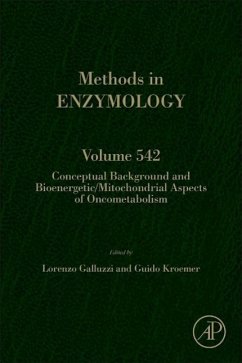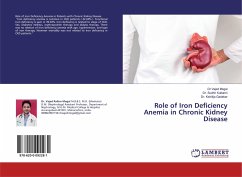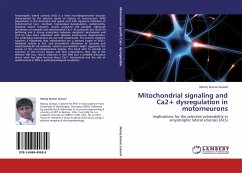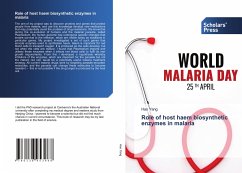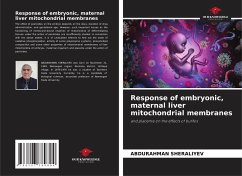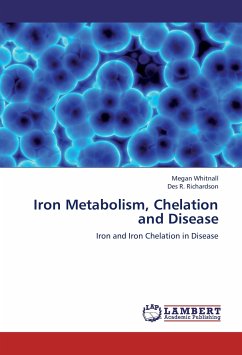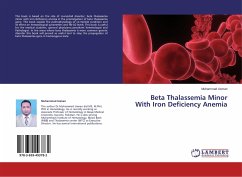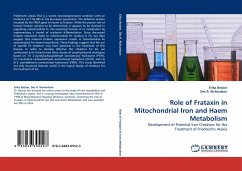
Role of Frataxin in Mitochondrial Iron and Haem Metabolism
Development of Potential Iron Chelators for the Treatment of Friedreich''s Ataxia
Versandkostenfrei!
Versandfertig in 6-10 Tagen
52,99 €
inkl. MwSt.

PAYBACK Punkte
26 °P sammeln!
Friedreich's ataxia (FA) is a severe neurodegenerative condition with an incidence of 1:50,000 in the European population. The defective protein encoded by the FRDA gene is known as frataxin. While the precise role of human frataxin remains to be determined, it appears to be involved in regulating mitochondrial Fe. We examined frataxin in Fe metabolism by implementing a model of erythroid differentiation. Since decreased frataxin expression leads to mitochondrial Fe- loading in FA, our data suggest that reduced frataxin expression results in mitochondrial Fe sequestration for heme biosynthesis...
Friedreich's ataxia (FA) is a severe neurodegenerative condition with an incidence of 1:50,000 in the European population. The defective protein encoded by the FRDA gene is known as frataxin. While the precise role of human frataxin remains to be determined, it appears to be involved in regulating mitochondrial Fe. We examined frataxin in Fe metabolism by implementing a model of erythroid differentiation. Since decreased frataxin expression leads to mitochondrial Fe- loading in FA, our data suggest that reduced frataxin expression results in mitochondrial Fe sequestration for heme biosynthesis. These findings suggest that the use of specific Fe chelators may have potential in the treatment of this disease. In order to develop effective (Fe) chelators for FA, we synthesized and characterised three classes of aroylhydrazone analogues based on: (1) 2-pyridylcarboxaldehyde isonicotinoyl hydrazone (PCIH), (2) 2-quinoline carboxaldehyde isonicotinoyl hydrazone (QCIH), and (3) di-2- pyridylketone isonicotinoyl hydrazone (PKIH). This study identified not only structural features useful in the logical design of chelators for the treatment of FA.




